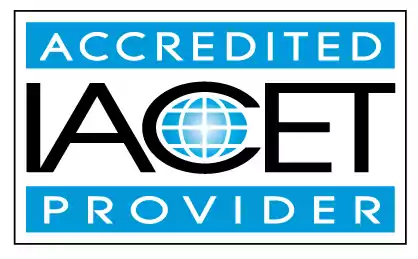List the misconceptions about the use of coaching in early intervention.
Discover the truth about coaching in early intervention and debunk common misconceptions. Explore how recycled materials can be used to create a sustainable and engaging classroom environment. Get insights and resources in early childhood education and child care centers.Trainings incorporating this outcome
CDA Subject Areas
Proficiency Level
Target Audience
Topic Areas
States
Alabama (2) Alaska (2) Alberta (2) Arizona (2) Australia (2) California (2) Colorado (2) Connecticut (2) Delaware (2) District of Columbia (2) Florida (2) Georgia (2) Hawaii (2) Idaho (2) Indiana (2) Iowa (2) Jamaica (2) Kansas (2) Louisiana (2) Maine (2) Manitoba (2) Maryland (2) Massachusetts (2) Michigan (2) Minnesota (1) Mississippi (2) Montana (2) Nebraska (1) New Hampshire (2) New Mexico (2) New York (2) Newfoundland and Labrador (2) North Carolina (1) North Dakota (2) Nova Scotia (2) Ohio (2) Oklahoma (2) Oregon (2) Pennsylvania (1) Prince Edward Island (2) Puerto Rico (2) Quebec (2) Rhode Island (2) Saskatchewan (2) South Dakota (2) Texas (2) Thailand (2) United Kingdom (2) Utah (2) Vermont (2) Virgin Islands (2) Virginia (2) Washington (2) West Virginia (2) Wisconsin (1) Wyoming (1)
45 hours courses
2 hours courses
Related Outcomes
- List strategies for coaches and mentors on how to apply DEI practices in child care.
- Define what it means to be a coach in the early childhood education setting.
- Describe the steps to use when collaborative coaching with teachers are not a match.
- List common myths and misconceptions surrounding challenging behaviors.
- Demonstrates understanding of early intervention and its importance
- List the principles of Mentoring and Coaching foundations
- Identify common mental health disorders in children and the importance of early intervention.
- Identify strategies to facilitate learning in the early childhood classroom using various methods.
- List the characteristics of effective coaches.
- Describe techniques used in successful coaching and mentoring.
- Describe common myths and misconceptions about time management in child care.
- Identify significant events surrounding the evolution of early childhood education throughout the world.
- Demonstrate understanding of using assessment and observation for short and long term goal development for special needs
- Describe the importance and value of coaching and mentoring.
- Explain effective strategies to guide children’s technology use and combat the media’s influence.
- Identify the different types of portfolios used in child care programs, and the appropriate portfolio components for each type.
- Define active play in the early childhood classroom and describe its benefits for young children.
- List safety risks for infants and toddlers and strategies to diminish these risks.
- Give examples of strategies caregivers can use to ensure safe sleeping habits and the prevention of SIDS/SUIDS in infants.
- List benefits to a multicultural and inclusionary environment.
Related Articles
- Benefits of Instructional Coaching
- Introduction to Coaching and Mentoring
- Early Intervention Resources
- Identifying Developmental Milestones in Children
- Cracking the Code of Children's Sleep (And Your Sanity)
- These Adult and Pediatric CPR Facts Will Shock You!
- Protecting Infants and Preventing Sleep-Related Incidents
- Why Safe Sleep Training Matters: Preventing SIDS and Promoting Infant Well-Being
- 🧩 Early Signs of Autism in Toddlers — What to Watch For 👀
- 🧩 What Does ABA Look Like in the Classroom? 🎓 What Teachers Should Know
- 🧩 How Do I Support a Student with Autism While Managing Classroom Behavior and Learning? 💕
- How Can We Adapt Our Teaching Approaches to Meet Different Learning Styles in Young Children?
- ❤️ How Do Educators Help Families Access the Services They Need?
- 💛🧩 How Can I Make My Teaching More Inclusive for Children with Autism?
- ⚠️🤝 How Can I Tell the Difference Between Bullying and Normal Conflict?
- Self-Paced Online Training for Early Childhood Educators
- What Is the Difference Between Coaching and Supervising in Child Care?
 4.5 CEUs
4.5 CEUs